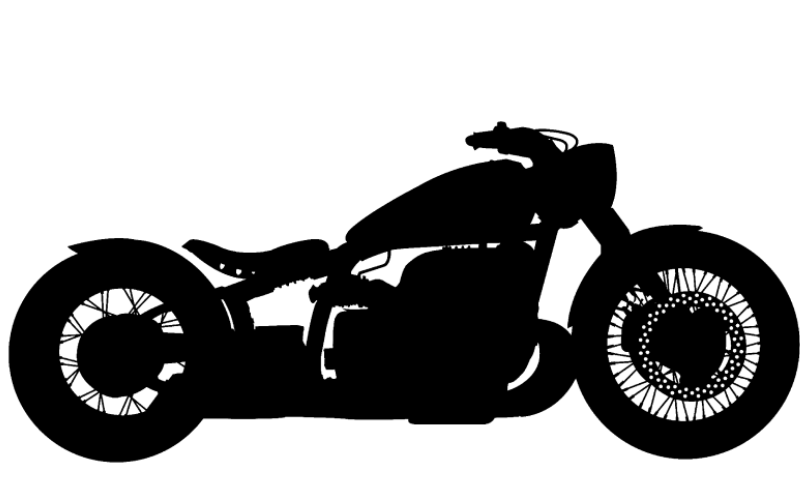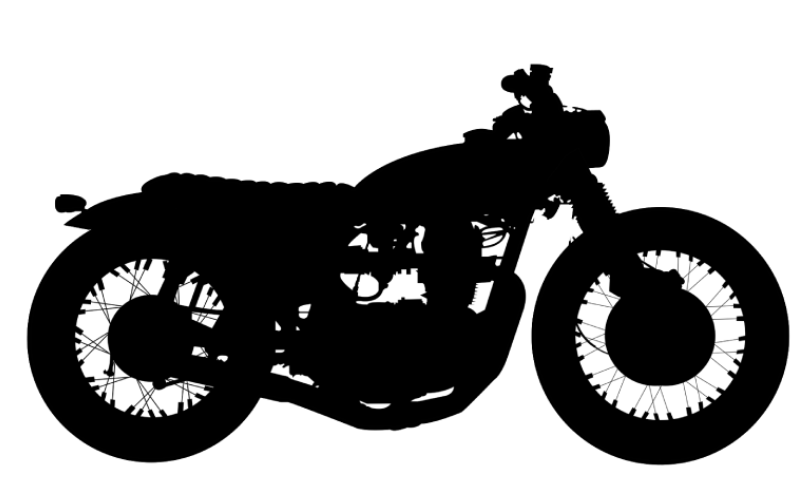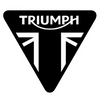SEARCH BY CATEGORIES
SEARCH BY INSPIRATIONS
- Air filters
- Brake & Clutch levers
- Electric box
- Exhaust
- Fenders
- Footpegs
- Front protections
- Front suspension
- Front suspension protections
- Fuel tanks
- Handle grips
- Handlebar
- Handlebar switch controls
- Headlights
- License plate holder
- Mirrors
- Mudguards
- Rear frame
- Suspensions
- Seats
- Silencers
- Speedometers
- Taillights
- Thermal strips
- Turn signals
- Air filters
- Belows front suspensions
- Brake & clutch levers
- Electric box
- Engine protection
- Exhaust
- Fenders
- Foot pegs
- Front suspensions
- Fuel tanks
- Handle grips
- Handlebar switch controls
- Handlebars
- Headlights
- License plate holder
- Mirrors
- Mudguards
- Rear frame
- Rear light
- Rear suspensions
- Seats
- Silencers
- Speedometers
- Thermal strips
- Turn signals
- Air filters
- Belows front suspensions
- Brake & Clutch levers
- Electric box
- Exhausts
- Fenders
- Foot pegs
- Front suspensions
- Fuel tanks
- Handle grips
- Handlebar switch controls
- Handlebars
- Headlights
- License plate holders
- Mirrors
- Mudguards
- Rear light
- Rear suspensions
- Seats
- Silencers
- Speedometers
- Thermal strips
- Turn signals
- Air filters
- Belows front suspension
- Brake & Clutch levers
- Electric box
- Exhaust
- Fenders
- Foot pegs
- Front protection
- Front suspensions
- Fuel tanks
- Handle grips
- Handlebar switch controls
- Handlebars
- Headlights
- License plate holders
- Mirrors
- Mudguards
- Rear frame
- Rear light
- Rear suspensions
- Seats
- Silencers
- Speedometers
- Thermal strips
- Turn signals
- Air filters
- Belows front suspensions
- Brake & Clutch levers
- Electric box
- Engine protection
- Exhausts
- Fenders
- Foot pegs
- Front suspensions
- Fuel tanks
- Handle grips
- Handlebar switch controls
- Handlebars
- Headlights
- License plate holders
- Mirrors
- Mudguards
- Rear frame
- Rear light
- Rear suspensions
- Seats
- Silencers
- Speedometers
- Thermal strips
- Turn signals

- Air filters
- Brake & Clutch levers
- Electric box
- Exhaust
- Fenders
- Footpegs
- Front protections
- Front suspension
- Front suspension protections
- Fuel tanks
- Handle grips
- Handlebar
- Handlebar switch controls
- Headlights
- License plate holder
- Mirrors
- Mudguards
- Rear frame
- Suspensions
- Seats
- Silencers
- Speedometers
- Taillights
- Thermal strips
- Turn signals

- Air filters
- Belows front suspensions
- Brake & clutch levers
- Electric box
- Engine protection
- Exhaust
- Fenders
- Foot pegs
- Front suspensions
- Fuel tanks
- Handle grips
- Handlebar switch controls
- Handlebars
- Headlights
- License plate holder
- Mirrors
- Mudguards
- Rear frame
- Rear light
- Rear suspensions
- Seats
- Silencers
- Speedometers
- Thermal strips
- Turn signals

- Air filters
- Belows front suspensions
- Brake & Clutch levers
- Electric box
- Exhausts
- Fenders
- Foot pegs
- Front suspensions
- Fuel tanks
- Handle grips
- Handlebar switch controls
- Handlebars
- Headlights
- License plate holders
- Mirrors
- Mudguards
- Rear light
- Rear suspensions
- Seats
- Silencers
- Speedometers
- Thermal strips
- Turn signals

- Air filters
- Belows front suspension
- Brake & Clutch levers
- Electric box
- Exhaust
- Fenders
- Foot pegs
- Front protection
- Front suspensions
- Fuel tanks
- Handle grips
- Handlebar switch controls
- Handlebars
- Headlights
- License plate holders
- Mirrors
- Mudguards
- Rear frame
- Rear light
- Rear suspensions
- Seats
- Silencers
- Speedometers
- Thermal strips
- Turn signals
- Air filters
- Belows front suspensions
- Brake & Clutch levers
- Electric box
- Engine protection
- Exhausts
- Fenders
- Foot pegs
- Front suspensions
- Fuel tanks
- Handle grips
- Handlebar switch controls
- Handlebars
- Headlights
- License plate holders
- Mirrors
- Mudguards
- Rear frame
- Rear light
- Rear suspensions
- Seats
- Silencers
- Speedometers
- Thermal strips
- Turn signals
PLUS DE MOTO
Add description, images, menus and links to your mega menu
A column with no settings can be used as a spacer
Link to your collections, sales and even external links
Add up to five columns
Add description, images, menus and links to your mega menu
A column with no settings can be used as a spacer
Link to your collections, sales and even external links
Add up to five columns
Add description, images, menus and links to your mega menu
A column with no settings can be used as a spacer
Link to your collections, sales and even external links
Add up to five columns
Add description, images, menus and links to your mega menu
A column with no settings can be used as a spacer
Link to your collections, sales and even external links
Add up to five columns
Tanks & Accessories
A motorcycle gas tank is usually a metal, plastic or fiberglass container that is used to store gasoline to power the motorcycle engine.
It is usually located at the front of the motorcycle, between the rider's legs, and can come in various shapes and sizes depending on the model and make of motorcycle.
Some motorcycle fuel tanks may also include features such as fuel level gauges, filler hatches and decorative accessories. It is important to note that the motorcycle tank should be checked and refilled regularly to ensure safe riding.
An adaptable motorcycle tank is a type of tank that can be installed on different makes or models of motorcycles. These tanks can be made from different materials such as aluminum, steel, plastic, etc.
Adaptable motorcycle tanks are usually used to replace damaged or obsolete original tanks, or to give a motorcycle a different look. It can also be used to improve a motorcycle's features, such as fuel storage capacity.
It is important to note that installing an adaptable motorcycle tank may require additional modifications to the motorcycle, such as special mounting hardware or adjustments to the fuel piping.
It is always advisable to consult a professional when installing an adaptable motorcycle tank to ensure compatibility and proper operation.
How to adapt a motorcycle gas tank?
There are several steps to follow to adapt a motorcycle gas tank:
Select an appropriate adaptable tank: Make sure the tank you choose is compatible with your motorcycle model. Check the dimensions of the tank tunnel and compare with the frame beam where the tank will be placed. For the front and rear brackets, adjustments may be needed on the tank or directly on the frame. If not, it will have to be adapted.
Prepare the bike: Before you begin installing the new tank, remove any parts that may interfere with the installation, such as seats, tank covers, cables and hoses.
Install the mounting hardware: Use the mounting hardware provided with the adaptable tank to attach the tank to the motorcycle. It is important to make sure the tank is aligned and stable before tightening the mounting bolts.
Connect the fuel line: Connect the fuel line from the new tank to the motorcycle. Make sure all connections are tight and waterproof.
Connect fuel level sensors: If your new tank has fuel level sensors, connect it to the motorcycle's fuel level sensors.
Test the system: After installing the new tank, check that everything is working properly. Make sure the fuel level is correct, the fuel line is not leaking and the fuel level sensors are working.
It is important to note that fitting a motorcycle tank requires tools and basic mechanical knowledge.
It is best to have a qualified mechanic assist you to avoid mistakes that could cause damage to the motorcycle or a fire hazard.
Why change a motorcycle fuel tank?
There can be several reasons to change a motorcycle tank:
Damage: The tank may be damaged in an accident or by corrosion from age. If the tank is punctured, it should be replaced to prevent dangerous fuel leaks.
Fuel Capacity: Some motorcycle owners prefer to replace their original tank to increase the fuel capacity of their motorcycle, so it can ride longer between fill-ups.
Appearance: Some people choose to replace their original tank to improve the appearance of their motorcycle, opting for more aesthetically pleasing tanks that better match the overall look of the motorcycle or a particular customization style, such as a harley davidson, custom chopper, cafe racer, scrambler or bobber.
Prevention: If the tank is old and in bad condition, it is better to replace it to avoid the risk of fuel leaks that could cause accidents or fires.
It is important to note that an adaptable motorcycle tank must be compatible with the model of your motorcycle, in order to fit the existing connections and fuel system.
It is also important to ensure that the replacement is properly performed and tested to avoid any safety risks.
How to restore a motorcycle tank ? Is it really profitable?
How much does it cost to paint a motorcycle tank?
The cost of painting a motorcycle tank can vary considerably depending on several factors such as
The quality of the paint used : There are significant price differences between different types of paint (acrylic paint, epoxy paint, etc.) and brands.
The complexity of the design : A simple design will cost less than a complex design, with patterns, gradients, metallic finishes, varnishes ...
Surface preparation : This includes tank removal, stripping, cleaning, repairing imperfections...
Labor : The cost of labor will depend on where you have your tank painted, and can vary greatly depending on the professional or company you choose.
In general, the cost of painting a motorcycle tank can range from $200 to $3000 or more. It is important to get quotes from several professionals to choose the one that best suits your budget and quality requirements.
how to dent a motorcycle gas tank?
There are several methods for removing dents from a motorcycle tank, but here is a commonly used method:
Prepare your motorcycle fuel tank: Make sure the tank is clean and dry before you start.
Apply a thin layer of body filler: Apply body filler to the dent. If the dent is small, you can use a spatula or flathead screwdriver to spread the filler.
Use a smoothing tool: Use a smoothing tool (such as a spatula or flathead screwdriver) to smooth the surface of the putty. Make sure the surface is smooth and free of air bubbles.
Let the filler dry: Let the filler dry for at least 24 hours.
Sand the surface: Sand the surface of the dent with fine sandpaper (such as 600 grit sandpaper) to remove excess filler and smooth the surface.
Paint: It is important to paint over the dent to hide the work marks, so that it will again blend in with the rest of the paint.
It is important to note that this method is valid for small, shallow dents.
For larger or deeper dents, it is best to consult a professional to avoid causing additional damage to the tank or safety hazards.
It should also be taken into consideration that cosmetic treatment does not guarantee that there will be no further deformations in the future, and that the tank cannot be guaranteed to be perfectly watertight after such an intervention.
Adding an additional motorcycle tank
A motorcycle fuel tank is an additional container installed on a motorcycle to increase its fuel storage capacity. It is usually installed at the rear of the motorcycle, on the seat or at the back of the motorcycle, and can be connected to the original tank to extend the motorcycle's range.
It is used to increase the fuel storage capacity, without increasing the size of the original tanks, especially for long distance motorcycles, raids, rallies, circuits...
The differente type of motorcycle gas tank
There are several different style gas tanks, each with their own unique characteristics and design. Some of the most common types include:
- Spherical fuel tank: This type of tank is round in shape and is typically used on classic or vintage motorcycles.
- Teardrop tank: This type of tank is teardrop-shaped and is often used on sport and racing motorcycles.
- Flat tank: This type of tank is flat and wide, and is typically used on cruisers and touring motorcycles.
- Underseat tank: This type of tank is located under the seat of the motorcycle, and is often used on scooters and smaller bikes.
- Saddlebag tanks: This type of tank is located on the side of the motorcycle, and is often used on touring and adventure bikes.
- Fuel cell: This type of tank is made of plastic or composite materials and is often used in racing and high-performance motorcycles.
Each type of tank has its own advantages and disadvantages, and the choice of tank will depend on the specific needs and preferences of the rider.
Build a custom gas tank
Building a custom motorcycle gas tank for a can be a challenging task that requires specific skills and tools. Here are the general steps that can be followed to build a gas tank for a motorcycle:
- Design: The first step is to design the tank, taking into consideration the size, shape, and capacity needed. The design should also consider the location of the tank on the motorcycle and how it will fit with the existing frame.
- Materials: The next step is to choose the materials for the tank. Metal, such as aluminum or steel, is a common choice for motorcycle gas tanks. Some builders also use plastic or composite materials.
- Fabrication: Once the materials are chosen, the fabrication process can begin. This typically involves cutting and shaping the materials to match the design, and then welding or bonding the pieces together to form the tank.
- Finishing: The final step is to finish the tank. This can involve sanding and polishing the surface to remove any imperfections and to give it a smooth finish. The tank also needs to be sealed to prevent leaks.
- Testing: The tank needs to be properly tested for leaks and pressure, before installing it on the motorcycle.
It's important to note that building a gas tank for a motorcycle is a complex and potentially dangerous task that should only be attempted by experienced builders with the proper equipment and knowledge. It is also important to comply with all safety regulations and laws regarding fuel storage. If you are not familiar with the process, it would be best to seek help from a professional.
REMMOTORCYCLE propose a custom gas tank for your bike.
How to clean a motorcycle gas tank?
Cleaning a motorcycle gas tank is an important task that can help maintain the performance and longevity of your bike. Here are some steps that can be followed to clean a motorcycle gas tank:
- Remove the tank: The first step is to remove the tank from the motorcycle. This will typically involve disconnecting the fuel lines and any electrical connections, and then unbolting the tank from the frame.
- Drain the tank: Before cleaning the tank, it's important to drain any remaining fuel. This can be done by opening the petcock or fuel valve at the bottom of the tank.
- Clean the tank's exterior: Using a mild detergent and water, clean the exterior of the tank. You can use a soft-bristled brush to scrub away any dirt or grime. Rinse thoroughly with water and dry with a clean cloth.
- Clean the inside of the tank: To clean the inside of the tank, you can use a specialized tank cleaning solution or a mixture of water and white vinegar. Use a funnel to pour the cleaning solution into the tank, and then shake the tank to agitate the solution. This will help loosen any built-up dirt or rust.
- Rinse and dry: Once the cleaning solution has been agitated, drain the tank and rinse thoroughly with water. Dry the tank with a clean cloth or compressed air.
- Inspect: Once the tank is clean and dry, inspect it for any rust or damage. If there are any cracks or rust holes, the tank should be repaired or replaced before reinstalling it on the motorcycle.
It's also important to note that, before you start cleaning the gas tank, it's important to check the owner's manual of your motorcycle, as some manufacturers may have specific recommendations for cleaning the gas tank.
How big are motorcycle gas tanks?
The size of a motorcycle gas tank can vary depending on the make and model of the motorcycle. In general, the size of a motorcycle gas tank ranges from about 2 gallons to about 5 gallons, with some larger touring motorcycles having tanks that hold up to 7 gallons.
The size of the motorcycle gas tank can also depend on the motorcycle's intended use. Sport and racing motorcycles often have smaller tanks to save weight, while touring and long-distance motorcycles have larger tanks to increase their range.
It's also worth noting that, even if the tanks are similar in size, the actual fuel range of a motorcycle can vary depending on the engine's fuel efficiency, the riding style and the terrain. A smaller tank can have a larger range if the motorcycle is more fuel-efficient.
It's always important to check the owner's manual of your motorcycle for the exact size of the gas tank, as well as for the recommended fuel type, and the maximum fuel capacity.
motorcycle gas tank rust removal
Rust can develop in a motorcycle gas tank over time, due to exposure to moisture and other environmental factors. Here are some steps that can be followed to remove rust from a motorcycle gas tank:
- Clean the tank: Begin by cleaning the tank thoroughly with a mild detergent and water. Use a soft-bristled brush to scrub away any dirt or grime. Rinse thoroughly with water and dry with a clean cloth.
- Remove the rust: To remove the rust from inside the tank, you can use a specialized rust remover solution or a mixture of water and white vinegar. Use a funnel to pour the solution into the tank, and then shake the tank to agitate the solution. This will help loosen and remove the rust.
- Scrub the tank: Use a wire brush or a specialized tank cleaning brush to scrub away any remaining rust. Be sure to pay attention to the bottom and corners of the tank, as rust tends to accumulate in these areas.
- Rinse and dry: Once the rust has been removed, drain the tank and rinse it thoroughly with water. Dry the tank with a clean cloth or compressed air.
- Inspect: Once the tank is clean and dry, inspect it for any rust or damage. If there are any cracks or rust holes, the tank should be repaired or replaced before reinstalling it on the motorcycle.
- rust prevention: Once you've cleaned the tank, it's important to apply a rust inhibitor to the tank's interior. This will help to prevent rust from forming in the future.
In this category, you will find a wide range of adaptable or plug-and-play motorcycle fuel tanks.
If you have a cafe racer, here is our selection: cafe racer gas tank
If you have a scramber, here is our selection: scrambler gas tank
If you have a bobber, here is our selection: bobber gas tank



























































